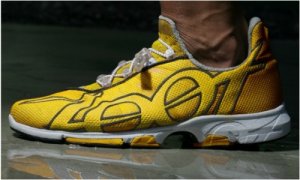Do walkers need different shoes for walking, race walking, tramping or endurance  walking? Does it really matter?
walking? Does it really matter?
Yes, different ways of walking require different shoe designs and materials. Here’s a rundown (walk-down) of the things you should look for in your shoes:
Casual Walking
For casual fitness walking, those who aren’t planning to cover more than four to eight kms at a time are safe using anything from lightweight running shoes to cross-trainers to race walking shoes. Walkers generally impact the ground with less than half the force of runners, so they don’t need excessive cushioning. In fact, too much heel cushioning can lead to shin pain and other problems.
Race walking
Race walking uses a lot more muscles and relies on the feet much more than fitness walking does. Consequently, the right shoes are critical. Race walking shoes need to be very flexible to allow the feet to roll from heel to toe, and they should have a very low heel to reduce leverage that can cause the feet to slap the ground after heel contact. Real race walking shoes or running racing flats are the best.
Marathon & Ultra-Marathon Walking
Here the fit of the shoe is the most critical factor when you’re on your feet for many hours. Shoes that are too tight (or too loose) can cause painful blisters or black toenails.
Off-road Walking
All-terrains, or anything with a treaded, high-grip outsole are best for negotiating waterways and algae-covered rocks.
Good luck finding your perfect fit and keep walking!
